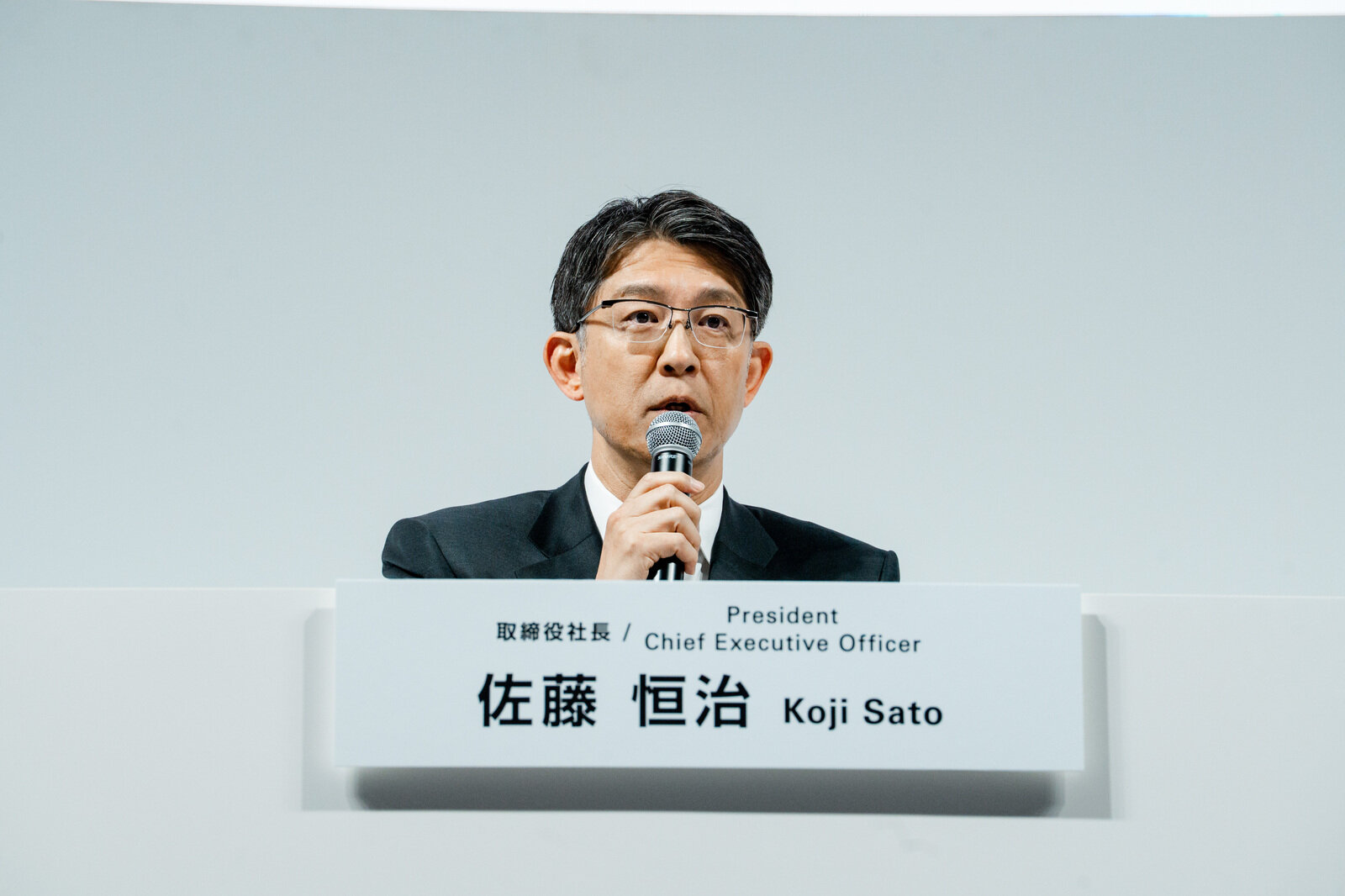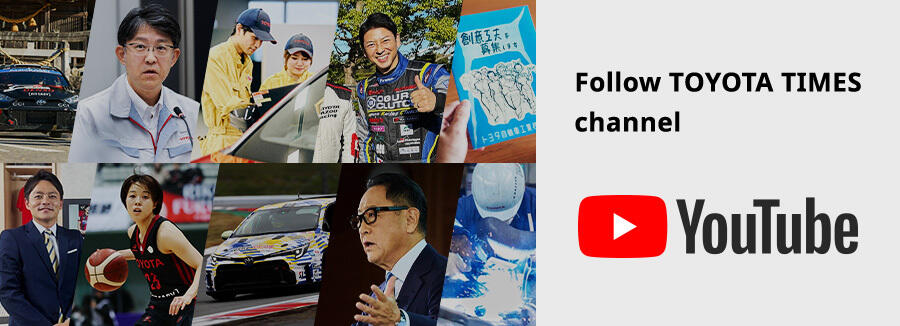
At Toyota's financial results briefing for the year to March 2025, President Koji Sato spoke about the company's progress in strengthening its foundations, and its efforts to change the future of cars. We share his speech in full.
Enhancing the resolution of our multi-pathway approach
The Q&A session that followed President Sato’s speech also featured several questions related to these key themes.
――What does the next financial year hold? How will you develop the business toward 2030, while moving forward with electrification, intelligence, and diversification? Please comment on hybrid vehicle sales, and the earning power of PHEVs (plug-in hybrid vehicles) and battery EVs.
President Sato

With regard to the electrification transition, we have now seen the realities and how fast things are moving around the world.
I think this year will add greater resolution to this picture, giving us a better understanding of uptake speed and specifics for each region.
In battery EVs, for example, we have shifted from an era of global debate to one in which China is clearly moving the fastest, going beyond merely electric vehicles to spur a mobility evolution in which intelligence is also integral.
We want to place ourselves in this fast-moving environment, integrating cutting-edge technologies while pursuing projects that will drive a structural transformation in mobility.
In reality, although we are in a period of visible slowdown in the shift to battery EVs, there is a need for wide-ranging means of achieving carbon neutrality. I believe the situation calls for approaches that also encompass the energy environment.
Approaching decarbonization from the fuel side, including e-fuels (synthetic fuels) and biofuels, will be a crucial point.
We will accelerate the creation of practical solutions with carbon-neutral fuels, centered around hybrid vehicles and PHEVs.
I think the coming year will be one in which our core remains unchanged, even as we increase the resolution of individual elements.
Another area we are committed to is creating the right environment. Simply pushing for the evolution of cars on their own does not lead to the diffusion of mobility.
For example, circumstances have shown how difficult it is to achieve the widespread adoption of battery EVs or hydrogen by advancing mobility on its own, without establishing the surrounding environment, including energy, infrastructure, and legislation, at the same time.
That is why we need to collaborate beyond the auto industry, for example with the energy and IT sectors, or to team up with national and local governments, making comprehensive efforts to establish these environments and build the necessary foundations.
We intend to focus more of our energies on this area.
――You have forecast battery EVs to increase by more than 150,000 units this year to 310,000. On the other hand, the plan set out in 2023 noted that Toyota would making 1.5 million annually by 2026. Are these plans now being revised? What is your sales strategy for battery EVs?
President Sato
The plan for battery EV sales to grow by more than 150,000 units is backed by a forecast that incorporates the effect of new model launches.
As for the (sales) benchmark we presented, with 1.5 million vehicles in 2026 and 3.5 million in 2030, we determine such figures based on actual demand.
Since actual demand shifts, we revise our benchmarks to reflect the changing pace.
The figure of 1.5 million vehicles by 2026 is one yardstick that guides our supply chain preparation, investment timing, and other aspects.
We are getting a realistic picture of actual demand and the pace of battery EV adoption, and based on this, we are revising the 1.5 million vehicle figure.
――Even as the hybrid vehicles that are Toyota’s strength perform well, growth in PHEVs, the so-called “practical battery EVs,” appears sluggish. I get the impression that you have also slightly toned down the excitement around hydrogen. The development of hydrogen engines through motorsports, which began while President Sato led the GR Company, is entering its fifth year. Could you provide an update on this progress?
President Sato
We intend to stick firmly to our multi-pathway strategy. Toyota is working tirelessly to develop technologies that will contribute to further advances in internal combustion engines and greater efficiency in hybrid systems.
We are developing technologies that will make these engines and systems more compact, more efficient, and more powerful, and we want to keep working harder to drive the evolution of powertrains.
We recognize that the path and pace of diffusion differ considerably depending on the type of fuel or energy.
The biggest challenge with hydrogen is that it has become a very expensive form of energy due to the focus on its provenance.
Since a high energy cost becomes a massive barrier to widespread adoption, we must make concerted efforts to increase our consumption of hydrogen to ensure that we, too, are a sizeable off-taker (buyer of a service or product).
Of course, while we are working on passenger vehicles as well, the sensitivity for commercials is about 60 times greater. That’s roughly the difference between a truck and a passenger car. I believe that if we make firm efforts to set a pace for diffusion and bring down costs, then the hydrogen engine technology will finally come into its own.
We have more or less gotten a handle on controlling the actual combustion within hydrogen engines. From here, it’s about efficiency. Having mastered the difficult combustion of hydrogen, we can also improve the efficiency of internal combustion engines.
As such, we have started to see the benefits that can be gained for engine technologies that use biofuels and e-fuels.
Right now, the circle is expanding outward from hydrogen, and we are seeing interaction between different elements of our multi-pathway strategy.
We will continue our hydrogen efforts in the Super Taikyu and would greatly appreciate your continued support.
This is an area in which Chairman Akio Toyoda has personally taken the wheel and is leading the way toward a hydrogen society, and I, too, would like to re-emphasize my commitment to simultaneously pursuing this goal through various parallel efforts. We are certainly not giving up.


